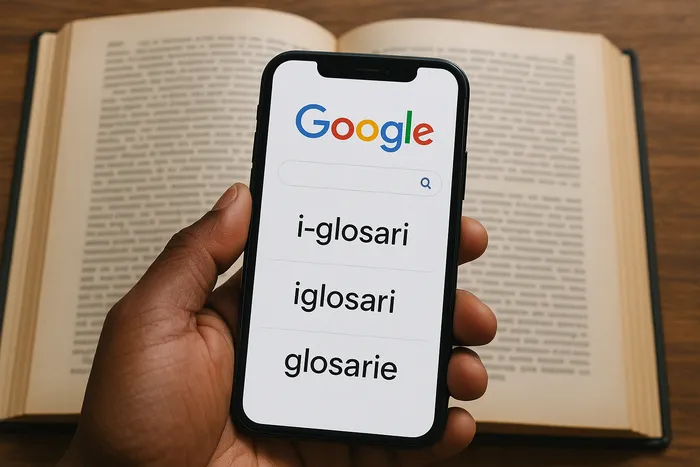On 15 October 2025, Google South Africa, in collaboration with the Pan South African Language Board (PanSALB), launched a groundbreaking initiative in Johannesburg: a glossary of 100 artificial intelligence terms translated and standardised into isiZulu, isiXhosa, and Afrikaans. This move signifies a growing understanding that true digital inclusion and democratisation of technology in South Africa require not only translated interfaces but also the ability for deep technical concepts to be understood in the diverse languages of its communities.
Digital inclusion through linguistic equity
English has historically dominated technological and scientific conversations, which has created an invisible barrier in many African regions. When AI terminology is presented solely in English, it can feel isolating or exclusionary for communities whose first languages are indigenous. To address this, a new glossary provides Zulu, Xhosa, and Afrikaans speakers with key AI terms in their native languages. These are not merely literal translations, but carefully adapted concepts designed to resonate both culturally and linguistically.
Google’s Africa blog details the collaborative origins of this project, involving linguists, lexicographers, AI experts, higher education institutions, and government agencies. In South Africa, the partnership with PanSALB was crucial, as their National Language Boards vetted linguistic choices for consistency. The resulting glossary, intended for researchers, educators, translators, technology developers, and language enthusiasts, is publicly available via GitHub.
From “hallucination” to “human-in-the-loop”: Localising core concepts
Translating AI concepts such as "hallucination," "conversational AI," "active learning," and "noisy data" presents unique challenges. For example, "hallucination" in AI describes instances where a model generates information that sounds plausible but is factually incorrect. To address this, the glossary provides an accurate term and definition in Zulu, Xhosa, and Afrikaans, effectively conveying these nuanced meanings.
Google’s AI glossary demonstrates a thoughtful approach to translating technical terms into Zulu, Xhosa, and Afrikaans, preserving both meaning and cultural relevance. For instance, "human-in-the-loop" is rendered in Zulu as inxumano yomuntu nomshini, meaning "interaction between human and machine," highlighting the conceptual logic. Similarly, "deepfake" is translated as diepvervalsing in Afrikaans, ideepfake in Xhosa, and ifihlabuwuwa in Zulu. These translations showcase how languages adapt to new technological advancements while maintaining clarity and cultural authenticity.
Given the unique morphological systems, idiomatic constraints, and historical lexicons of each language, the glossary serves as a dynamic experiment in effectively integrating tech vocabulary. Rather than simple translation, the lexicographers focused on achieving clarity, consistency, and acceptance of new terms. This process contributes to language modernization, enabling it to articulate 21st-century concepts.
Comparative perspectives: Learning from other African language initiatives
Google’s South African glossary is a continuation of its earlier work in East Africa, where the company developed a similar set of AI terms for Swahili. That project, which involved collaboration with language institutions across several countries, established a foundation for transnational linguistic inclusion within African tech discourse.
Across South Africa, initiatives are actively working to enhance the digital presence of indigenous languages. A key example is the SWiP (South African Wikipedia and PanSALB) project. This project collaborates with language communities to develop online resources, content, and tools, thereby fostering linguistic equity in the digital domain. Google’s AI glossary further supports these efforts by providing valuable technical vocabulary to this digital infrastructure. This contribution makes it possible for local language websites, educational materials, and AI systems to communicate in these languages.
This glossary sets itself apart through its open-source and community-oriented nature, alongside the intricate balance of technical complexity and cultural sensitivity needed for AI terminology. It mirrors efforts in other multilingual societies where governments or technology companies standardize domain-specific vocabulary (e.g., health, climate, law) to enhance understanding and reduce ambiguity.
Toward a more inclusive digital future
The Google-PanSALB AI glossary boldly declares that language should not be a barrier to technological advancement. By making AI terminology available in isiZulu, isiXhosa, and Afrikaans, this initiative helps to redefine technology. It’s no longer an external force, but something that can communicate in your own language, both literally and figuratively.
This glossary is a catalyst for the adoption, revision, and expansion of AI-driven systems, potentially transforming how South Africans, and eventually other language speakers interact with, evaluate, and influence them. If developed effectively, this project could serve as a model for integrating linguistic justice and technological innovation in multilingual societies.
Written By:
Sesona Mdlokovana
Associate at BRICS+ Consulting Group
Chinese & Middle Eastern Specialist
** MORE ARTICLES ON OUR WEBSITE https://bricscg.com/
** Follow https://x.com/brics_daily on X/Twitter for daily BRICS+ updates

